Ellora is one of the largest rock-cut monastery-temple caves complexes in the world, and a UNESCO World Heritage Site in Maharashtra, India. The site presents monuments and artwork of Buddhism, Hinduism and Jainism from the 600-1000 CE period. Cave 16 of Ellora features the largest single monolithic rock excavation in the world, the Kailasha temple, a chariot shaped monument dedicated to Shiva. The Kailasha temple excavation also presents the gods, goddesses and mythologies found in Vaishnavism, Shaktism and relief panels summarising the two major Hindu Epics.
Shrine’s History
The hills in which the caves are hewn, forms part of the Sahyadri ranges of the Deccan and dated to the Cretaceous era of the Geological time scale . The hills rise abruptly from the surrounding plains on the south and west, the western surface being extensively utilised for hewing the cave complexes. The hill also supports several streams, the prominent among them being the Elaganga, which drains into the Shiv, a stream of the Godavari river system. The Elaganga is in its full vigour during the monsoon, when the overflowing waters of a barrage in the upstream near Mahismati allows the gushing waters to land at Sita-ki-nahani? near Cave 29 as a crashing waterfall. The volcanic lava flowed during different periods, gave rise to extensive horizontal flows alternating with vesicular trap beds.
The vesicular traps formed the upper portion of each of the massive trap beds. The different lava flows also gave rise to vertical as well as horizontal joints in the rock formation. Depending upon the nature and mineralogical content of the lava flow, the rock formations also varied in character and texture, giving rise to various qualities like coarse grained, fine grained formations. The ancient builders at Ellora, like other places, particularly chose the fine grained formations of the Deccan trap, ideal for sculpting and rock hewing. In addition to this, the ancient builders also traced the horizontal and vertical joints in the rock formation to minimise the labour and time during excavation and rock splitting. The basaltic rock is also ideal for rock hewing, as they are soft during the initial excavation and hardens on exposure to environment.
The basaltic formation of the Deccan is ideal for rock hewing, the technique widely understood during ancient times. This induced the religious followers of various creeds to establish their settlements in them. By a rough estimate, there are nearly 1200 caves of varying sizes in the entire Maharashtra, out of which nearly 900 alone belong to Buddhism. The region is also famous for its antiquity. It has been inhabited since time immemorial, the stone tools belonging to the Upper Palaeolithic , Mesolithic bearing testimony to this fact. The Chalcolithic remains in the vicinity also indicates the continuity of human occupation in this region. The importance of Ellora during the early centuries of the Christian era is also understood by the findings of coins of Satavahanas, the ruling dynasty during the period.
The Satavahanas had their capital at Pratishtana (modern Paithan) and ruled the entire area between the Arabian Sea and Bay of Bengal and bordered by the Narmada River on the north. Ellora being located on the ancient trade route connecting the western ports on the Arabian sea like Sopara, Kalyan a thriving port; Chemula, the Samylla of Greek geographers, Chemula of Silaharas, on the island of Trombay and the inland cities like Paithan , Ter , Bhokardan etc. The fact that Satavahanas traversed this region is attested by their inscriptions at Nasik caves and donor inscriptions of their times at Pital Khora caves, located at a distance of 40 km west of Ellora. Ellora is located directly on the ancient trade route which traversed from Pratishtana via Aurangabad, Ellora, Pital Khora, Patne, Nasika .
Nasik is at the crossroads of an ancient trade route connecting centres on the west to east and those on the north to south. The location on the ancient trade route did not induce any activities at Ellora during the Satavahana rule. Brisk activities were already on at nearby Pital Khora, Nasik, Ajanta, etc., and this could have been a diversion of the ancient builders to support any activity here. However, as the multiplication of the religious establishments took place in every nook and corner of Maharashtra, the ideal location of Ellora was unavoidable. Thus grew one of the largest cave excavations at Ellora, that too of three different religious creeds, viz., Buddhism, Brahmanism and Jainism. The caves are datable from circa 6th – 7th century A.D. to 11th – 12th century A.D. In total, there are nearly 100 caves in the hill range out of which 34 caves are famous and visited by many tourists, out of which Caves 1 to 12 are Buddhist; Caves 13 to 29 are Brahmanical and Caves 30 to 34 are Jaina.
Two more groups of caves are noticed on the Elaganga and on an upper terrace, namely, the Ganesh Leni and Jogeshwari Leni. These religious establishments could have received royal patronage from various dynasties, even though inscriptional evidences are lacking for most of them. The only definite inscriptional evidence is that of Rashtrakuta Dantidurga on the back wall of the front mandapa of Cave 15. The Great Kailasa is attributed to Krishna I , the successor and uncle of Dantidurga.
A copper plate grant from Baroda of the period of Karka II speaks of the greatness of this edifice. The inscription tells us that this great edifice was built on a hill by Krishnaraja at Elapura and even the celestial beings moving in the sky were struck by its magnificence, as though it was self-existent, not created by mortals, and, even the architect who caused it was wonder-struck that he could build it. Apart from the above two inscriptions, the entire cave complexes lack inscriptions of the nature found at other cave sites like that of Ajanta, Nasik, Karle, Kanheri, etc.
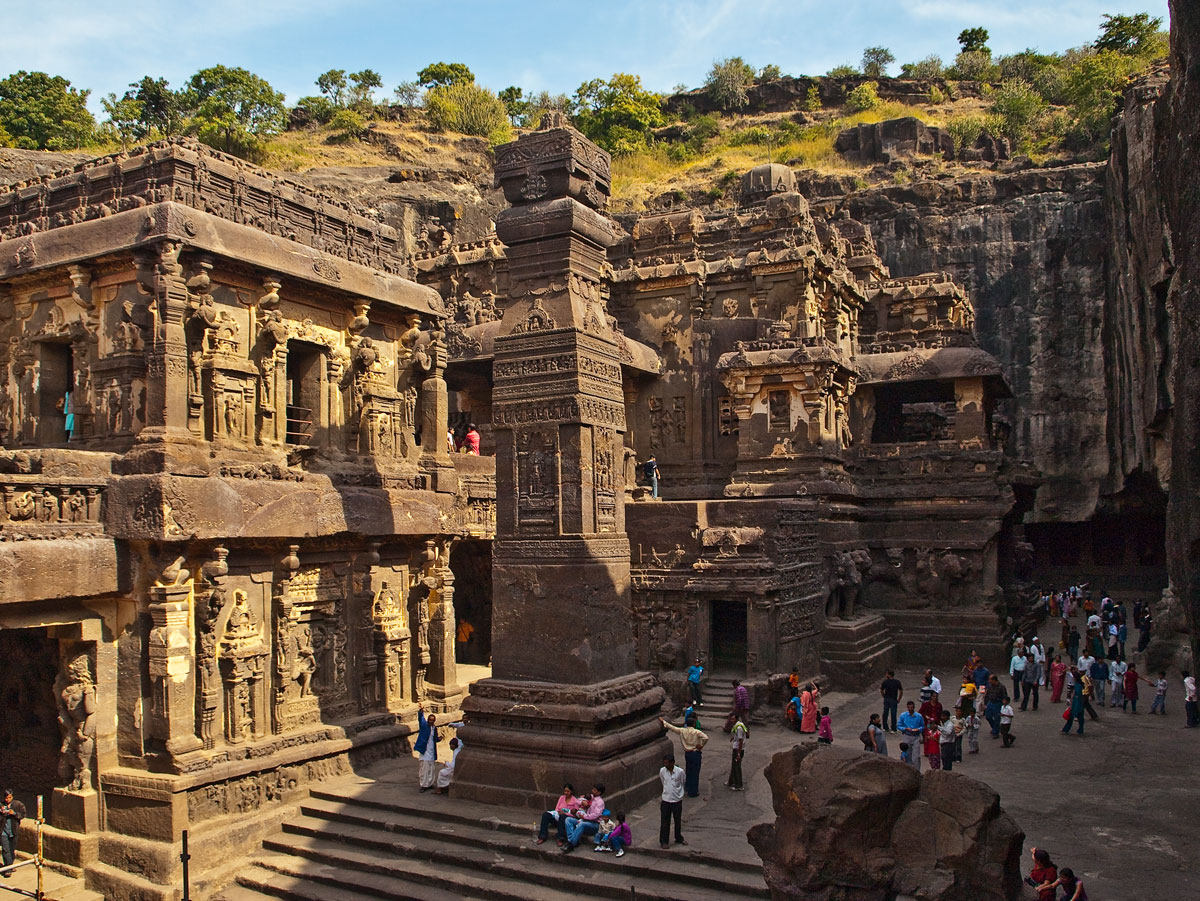

Architectural Relevance of This Shrine
The Buddhist caves, cave numbers 1 to 12, form an integral of the Ellora caves, the finest example of the cave and temple architecture in the Indian sub-continent. The Buddhist monasteries in the Ellora caves are large and multi-storeyed structures. The most important of all these cave shrines is the cave number 10, a Chaitya hall, which further consists of a large 15 feet Buddha’s statue in ‘preaching pose’. Also known as the ‘Carpenter’s cave’, the cave is more of a cathedral-like the large hall, whose ceilings give an impression of wooden beams. The sculpture of all these Buddhist caves has been dedicated to the Buddha in His different forms. The Kailasa temple architecture is different from the earlier style prevalent in the Deccan region.
As stated above, it appears to be based on the Virupaksha Temple at Pattadakal and the Kailasa temple at Kanchi, but it is not an exact imitation of these two temples. The southern influence on the temple architecture can be attributed to the involvement of Chalukya and Pallava artists in its construction. The indigenous Deccan artisans appear to have played a subordinate role in the temple’s construction. The entrance to the temple courtyard features a low gopuram. Most of the deities at the left of the entrance are Shaivaite while on the right hand side the deities are Vaishnavaites .
A two-storeyed gateway opens to reveal a U-shaped courtyard. The dimensions of the courtyard are 82 m x 46 m at the base. The courtyard is edged by a columned arcade three stories high. The arcades are punctuated by huge sculpted panels, and alcoves containing enormous sculptures of a variety of deities. Originally flying bridges of stone connected these galleries to central temple structures, but these have fallen. Within the courtyard, there is a central shrine dedicated to Shiva, and an image of his mount Nandi . The central shrine housing the lingam features a flat-roofed mandapa supported by 16 pillars, and a Dravidian shikhara. The shrine ? complete with pillars, windows, inner and outer rooms, gathering halls, and an enormous stone lingam at its heart ? is carved with niches, plasters, windows as well as images of deities, mithunas and other figures. As is traditional in Shiva temples, Nandi sits on a porch in front of the central temple.
The Nandi mandapa and main Shiva temple are each about 7 metres high, and built on two storeys. The lower stories of the Nandi Mandapa are both solid structures, decorated with elaborate illustrative carvings. The base of the temple has been carved to suggest that elephants are holding the structure aloft. A rock bridge connects the Nandi Mandapa to the porch of the temple. There are five detached shrines in the temple premises; three of these are dedicated to the river goddesses: Ganga, Yamuna and Saraswati. There are two Dhwajasthambha in the courtyard. A notable sculpture is that of the Ravana attempting to lift Mount Kailasa
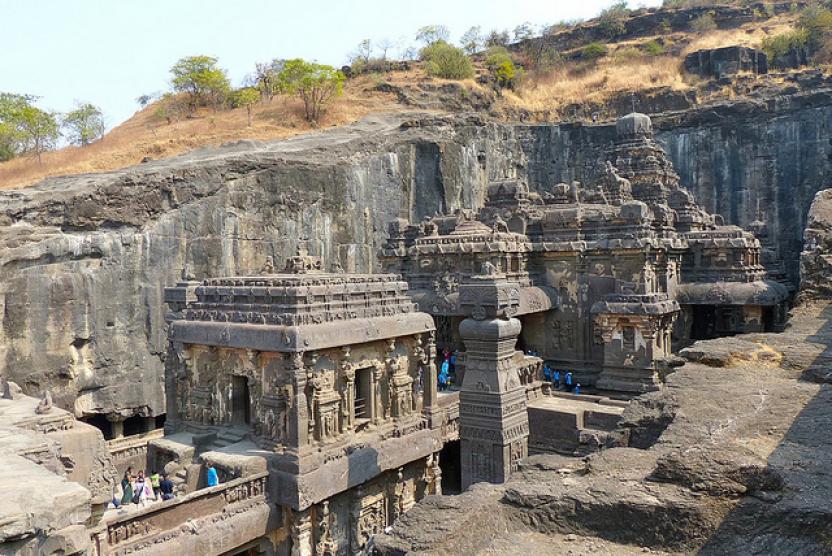
Shrine’s Map Location and How to Go There
By Road
The Ellora caves can be reached by road from other cities of Maharashtra such as Mumbai, Nasik, Jalgaon, including Aurangabad.
By Rail
The nearest railhead to Ellora is at Aurangabad, 28 kilometres away.
By Air
The Ellora caves, situated at a distance of 28 kilometres from Aurangabad, can be reached by air. The nearest airport is at Aurangabad, which is directly linked to other major Indian cities such as Delhi, Mumbai, Udaipur and Jaipur.
Shrine Timings
Open from sunrise to sunset Closed on Tuesday
Extra Information About this Shrine
Best Months to Visit The Ajanta caves are open for the tourists throughout the year, although the best months to visit the caves would be from October to March, due to the pleasant weather there.

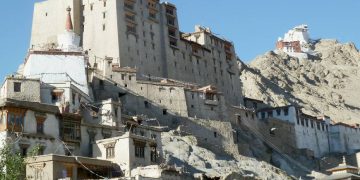

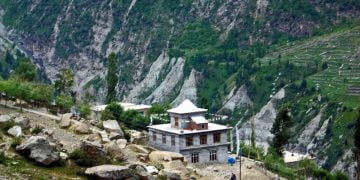
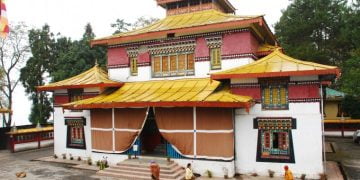

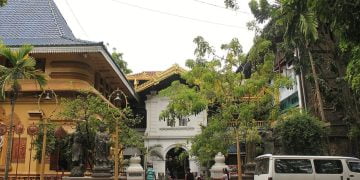
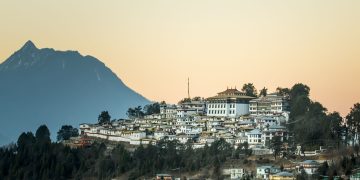
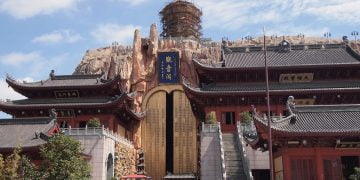
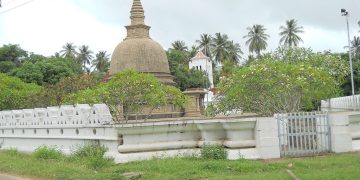
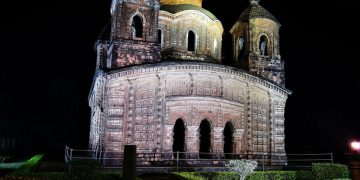
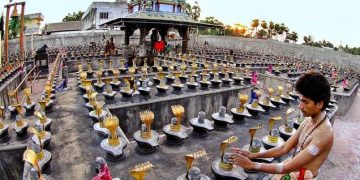

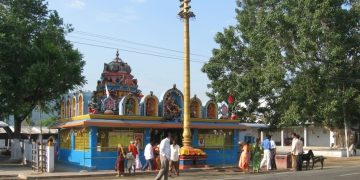
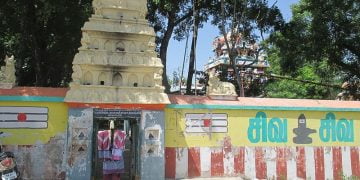
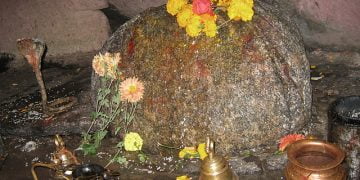
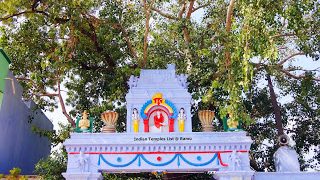
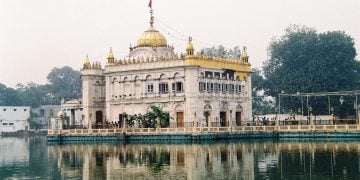
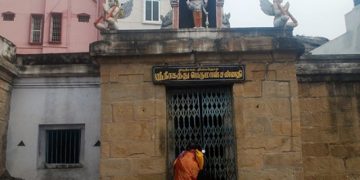
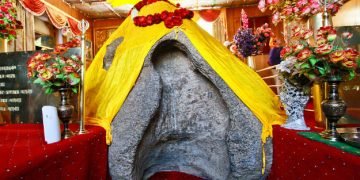
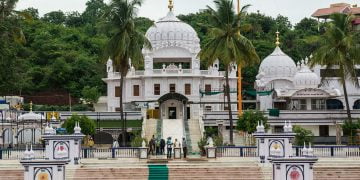

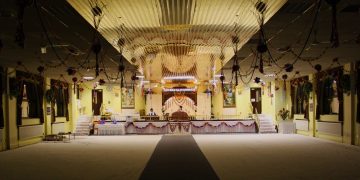
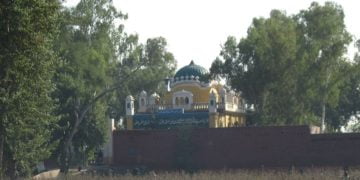
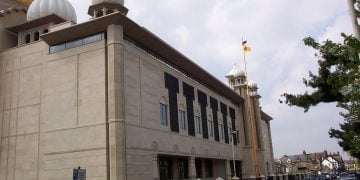
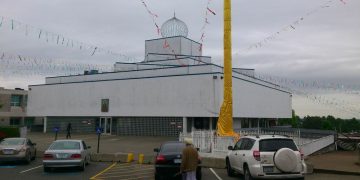
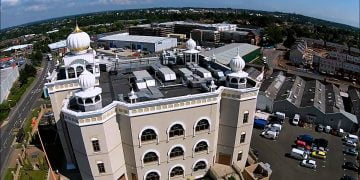
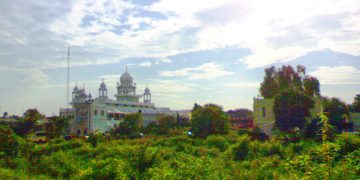
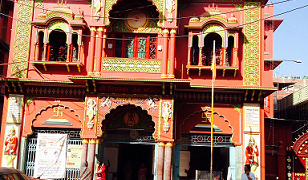
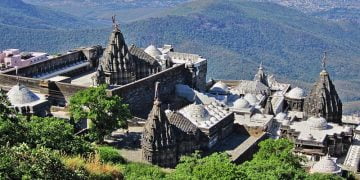
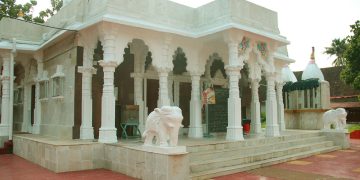
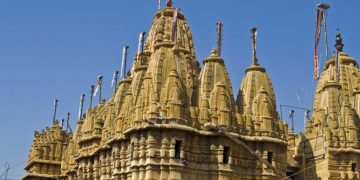
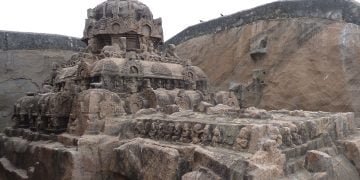
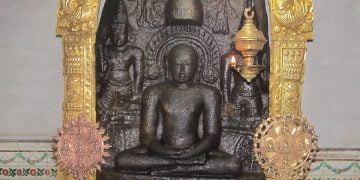
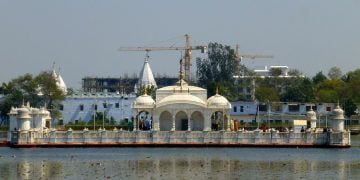

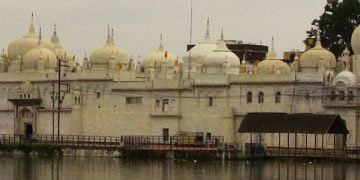

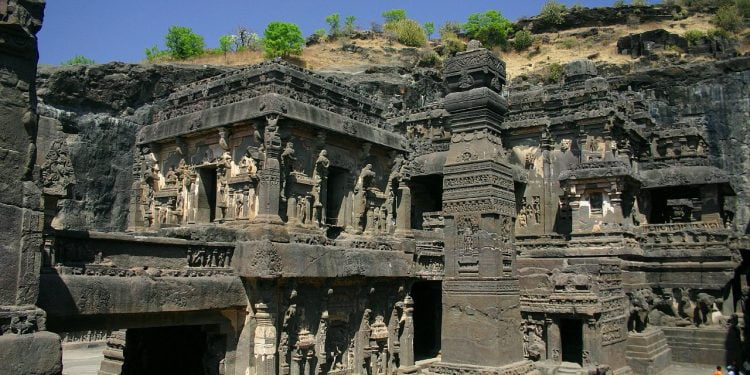

Discussion about this post